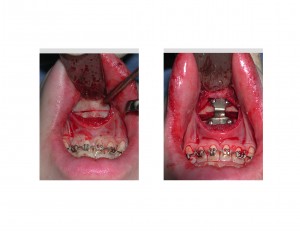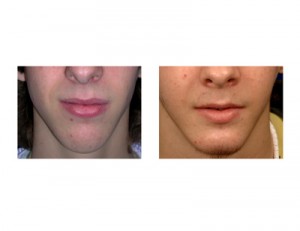Background: Chin deficiences are common and are usually satisfactorily treated by an implant augmentation method. While implants are good for mild to moderate short chin problems, they often are not adequate for a chin that has a more significant horizontal deficiency that is accompanied by other dimensional abnormalities.
Moving the symphysis of the mandible, known as a sliding genioplasty, is the other method of chin augmentation. It is not nearly as often done as chin implants being more invasive with a higher potential morbidity and longer recovery. It is frequently done as a complementary procedure in orthognathic surgery given that other jaw bones are being moved as well. But in the patient, a sliding genioplasty can outperform an implant by producing a better aesthetic result.
The sliding genioplasty has one dimensional advantage historically over an implant, its ability to change the vertical dimension of the chin. It can lengthen the vertical height of the chin as well as shorten it with any degree of horizontal advancement. While newer styles of chin implants now make it possible to lengthen the chin, no implant will ever be able to shorten the vertical height of the shin.
Case Study: This 18 year-old young man had a short chin that he wanted to improve. His chin was vertically elongated due to the shape of the mandible (lower jaw) to which it is attached. He also had some lower lip incompetence and a hyperactive chin ad due to excessive mentalis muscle activity.


The sliding genioplasty can do much more than just increase the horizontal projection of the chin. Attention needs to be paid to the other dimensions of the chin and how it relates to the rest of the face. Vertical shortening is the one dimensional change that only a bony genioplasty can create. Many very short chins have an elongated chin due to the backward rotation of the mandible. Vertical shortening can be created by the removal of a wedge of bone or by how the chin step plate is bent and positioned on the bone.
Case Highlights:
1) The sliding genioplasty is a versatile procedure that can not only augment the chin horizontally but also change its vertical height as well.
2) The angle of the osteotomy cut and the fixation plate used in a sliding genioplasty can lengthen or shorten the vertical height of the chin as it comes forward.
3) A sliding genioplasty can be done to bring the chin forward and shorten it vertically to keep the lower third of the face in good balance with the upper two-thirds.
Dr. Barry Eppley
Indianapolis, Indiana



